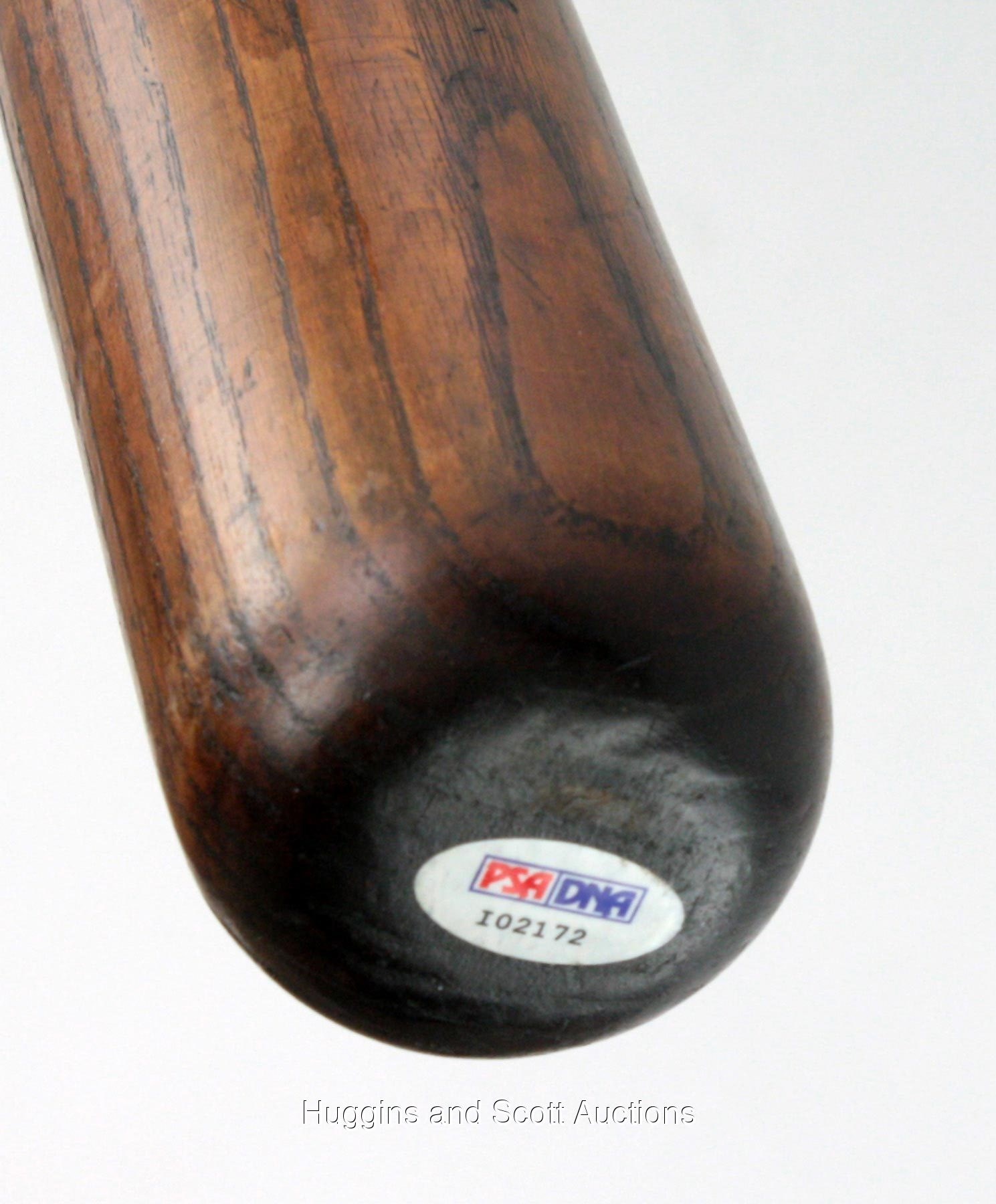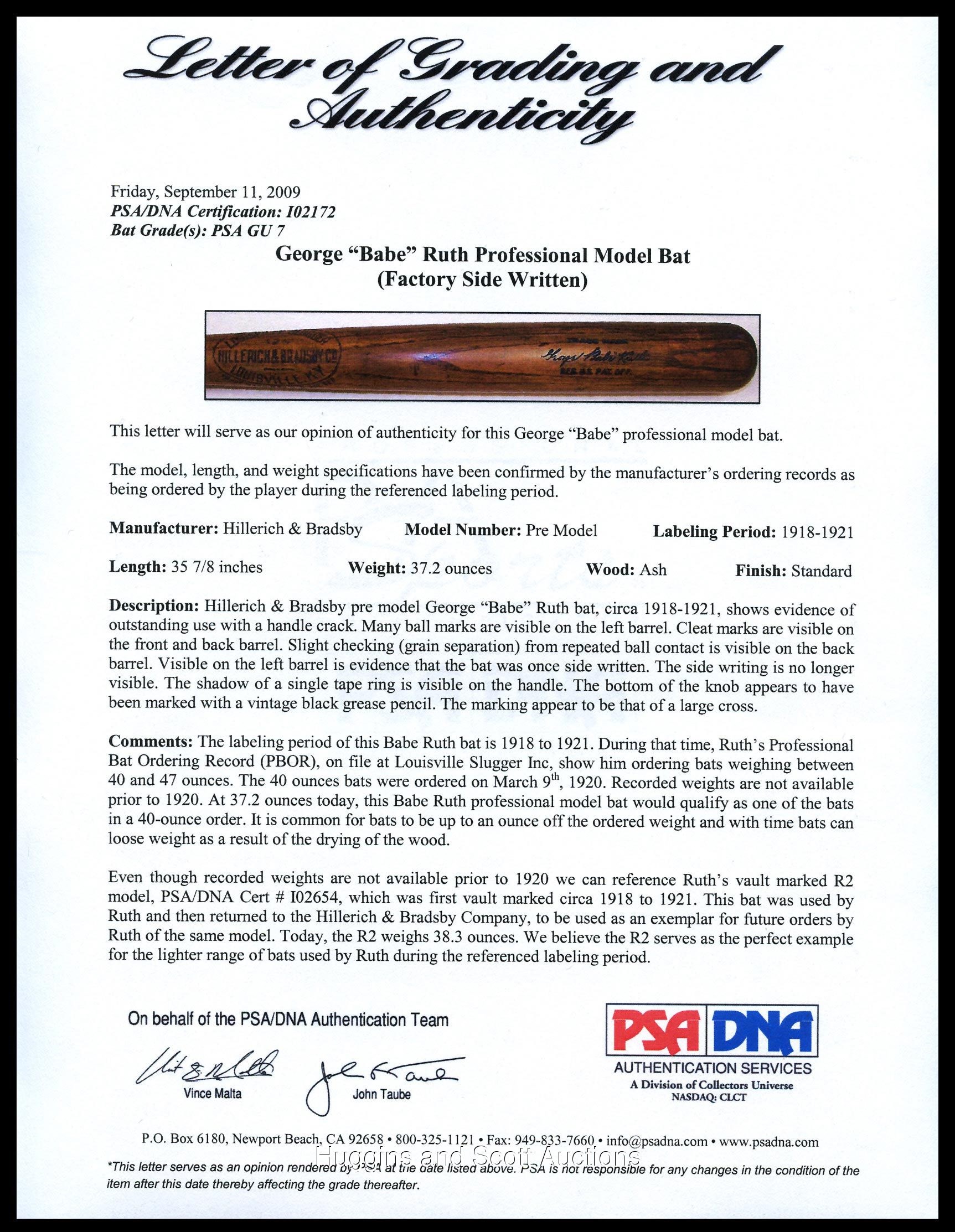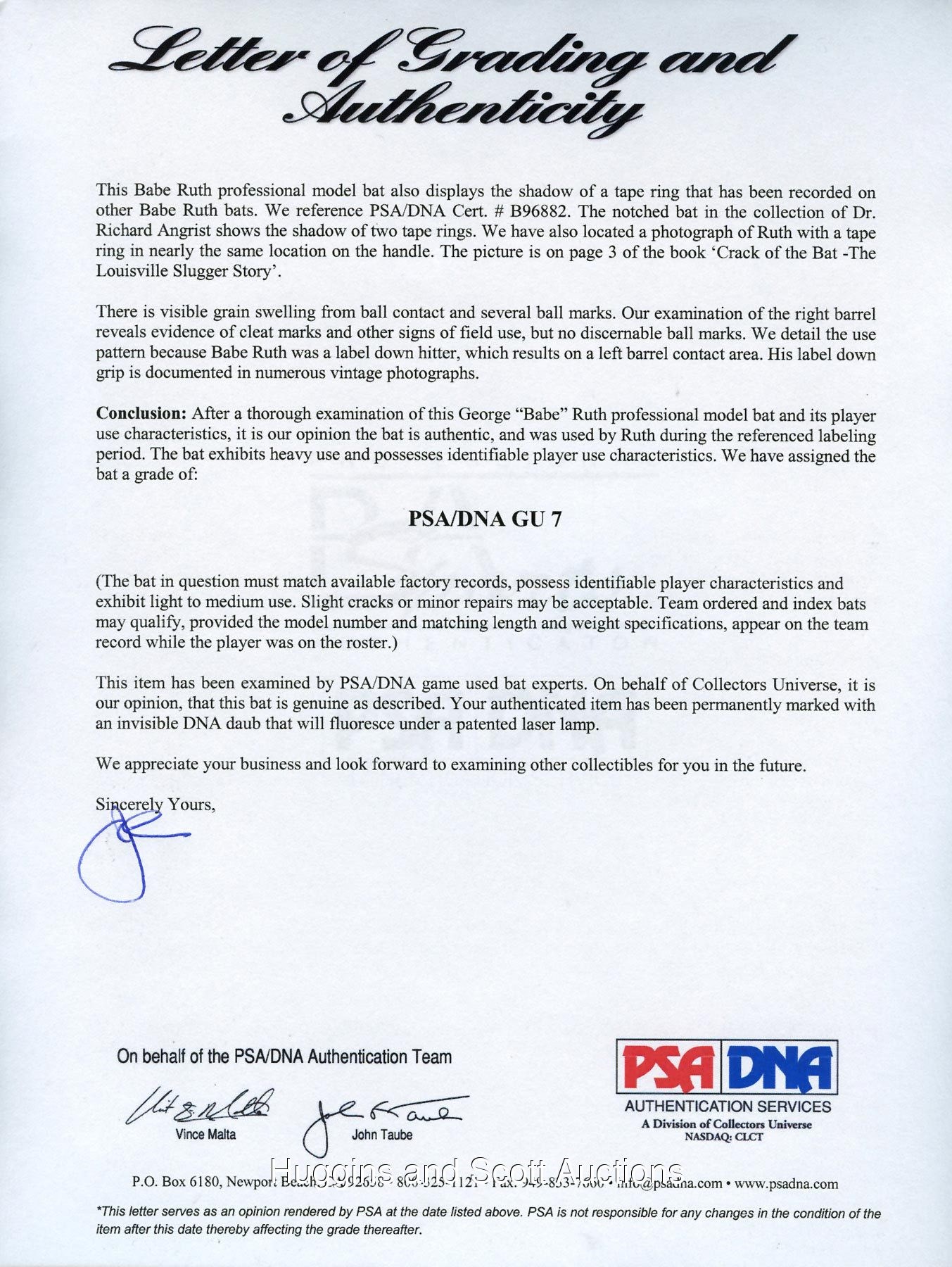Search
Babe Ruth Game-Used Baseball Bat 1918-1921 - PSA/DNA 7
- Sold For: $47,000
- Year: 1918
- Auction: 2009 December
- Lot #: 1
- Auction Category: Post-1900 Baseball Memorabilia
Without the slightest premonition of what was to transpire in the wake of the sale of his prized player, former Boston Red Sox owner and theatre magnate Harrison Frazee justified the infamous transaction in The Boston Globe. Opined Frazee: "I should have preferred to take players in exchange for Ruth, but no club could have given me the equivalent in men without wrecking itself." By all accounts, it was Ruth who subsequently performed the wrecking ... like no other player before or since. The offered Hillerich & Bradsby war club was wielded in Ruth's capable hands as he rewrote the record books at an unprecedented rate. Turned from high-grade white ash, this signature model weapon bears picture perfect traits that elevate its status as one of the most desirable Ruth gamers extant. Turned in the famed Kentucky-based plant during the 1918-1921 labeling period, this prized lumber was manufactured as both Ruth and Hillerich & Bradsby rose to prominence. The effects of Ruth's sale and the resultant demise of the Red Sox are well documented, thus obscuring the memory that prior to the Yankees' rise, Boston fielded the most dominant team in the American League. But with the dilemma of Ruth's demand for a larger stipend and dwindling theatre receipts, Frazee shopped the Baltimore-born slugger, whose services the Yankees secured via an all-cash offer of $100,000. It was during this bat's labeling period that Ruth made the transition from mound star to slugger, his league-best home run totals ascending from 11 to 29 to 54 to 59. Ruth all but invented the circuit clout and this very bat launched any number of those frequent tape-measure shots at Fenway Park and/or Harlem's Polo Grounds. The dash-dot-dash center brand is an earmark of H&B's emergence as the world's primary source for weaponry. Having recently joined the company, salesman Frank Bradsby's surname was added to the center brand in 1916. With clients like Ruth, it was no accident that by 1923, H&B sold more bats than any plant in the world. The barrel stampings are appealing, as well, with "George "Babe" Ruth and "Trade Mark - Reg. U.S. Pat. Off." appearing in deep and defined characters. These identifiers are accents to a gorgeous deep brown patina. The furniture-like finish is home to outstanding use attributes that are definitive to Ruth gamers. With dimensions of 35-7/8 inches and 37.2 ounces, the item matches those on Ruth's PBOR (Professional Bat Ordering Record) during that era. During the last two years of the said labeling period, records show orders for bats between 40 and 47 ounces (recorded weights are not available for orders prior to 1920). At 37.2 ounces today, this bat would qualify as one of the bats in a 40-ounce order. It is common for bats to be up to an ounce off the ordered weight and with time bats can lose weight as a result of the drying of the wood. Regarding this detail, we reference Ruth’s vault marked R2 model (PSA/DNA Cert #102654), which was first vault marked circa 1918-1921. This bat was used by Ruth and then returned to the H&B plant to be used as an exemplar for future Ruth orders. Today, the R2 weighs 38.3 ounces. We believe the R2 serves as the perfect example for the lighter range of weapons used by Ruth during the referenced labeling period. The left barrel is the canvas for ball and cleat marks. The right barrel, meanwhile, shows cleat marks and other evidence of field use, but no discernable ball marks. These traits are consistent with the fact that Ruth was a label-down hitter, which results in contact on the left barrel. Slight checking (grain separation) from repeated ball contact is visible on the back barrel. There is evidence of side writing on the barrel, though the notations are no longer visible. Additionally, the knob has been marked (a large cross) in vintage grease pencil. A nine-inch crack that extends just beyond the center brand represents the bat's demise. Another notable attribute is a tape ring shadow on the handle. We reference PSA/DNA Cert #B96882. The notched bat in the collection of Dr. Richard Angrist shows the shadow of two tape rings. We have also located an image of Ruth with a tape ring in nearly the same location (page 3 of Crack the Bat: The Louisville Slugger Story). All told, this white ash heirloom is to be coveted on multiple fronts, none more important than the historically significant era - in both baseball and American culture - from which it hails. Graded PSA GU 7. Accompanying is a full photo LOA from John Taube PSA/DNA.








